Crested Gecko Care
This caresheet provides care information for the crested gecko (Rhacodactylus ciliatus) but may also be used as a care guide for other Rhacodactylus species.
Photos and text copyright of Pauline Smith 2005
What's in a Name?
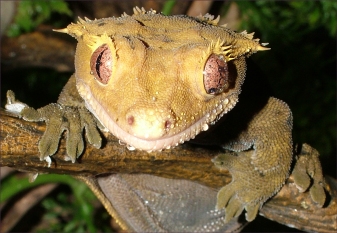 |
Crested geckos are members of the genus Rhacodactylus (which derives from the Greek, Rhakos, which means 'spine' and Dactylus which means finger or toe. The second part of their scientific name, ciliatus, derives from the Latin Cili which means fringe or eyelash and refers to the crest that starts over their eyes and runs the length of their body. |
Natural History and Characteristics
| Crested geckos (Rhacodactylus ciliatus), like the other Rhacodactylus species, are native only to the islands of New Caledonia. They are nocturnal, rainforest dwellers that can be found sleeping in low level tree trunk hollows, amongst leaves or on the ground in the leaf litter during the day. When dusk falls these fascinating geckos emerge from their sleepy hideaways to begin the nights activities. | |
| Although crested geckos are one of the smaller Rhacodactylus species, they are still relatively large, stocky geckos reaching an adult size of 8-9 inches (from snout to tail tip). Their heads are triangular and flattened and their eyes are large, as is typical of a nocturnal species. Crested geckos do not possess eyelids but have two very impressive crests (rows of soft spiny scales) that begin over their eye (like very lush eyelashes) and run the length of their body, stopping at the tail base. Whilst asleep the eyes are retracted very slightly into the head and the upper part of the eye rim/crest relaxes and droops over the eye. Like many geckos, crested geckos have lamellae on their toes allowing them to climb smooth vertical surfaces, including glass. In addition, they possess another pad of lamellae on the flattened tip of their prehensile (gripping) tail. This specialized tail affords extra grip and maneuverability to these very energetic geckos as they leap from branch to branch. The geckos can be quite vocal, keepers have reported hearing a variety of barks and squeaks, although some keepers have never heard any vocalizations. | 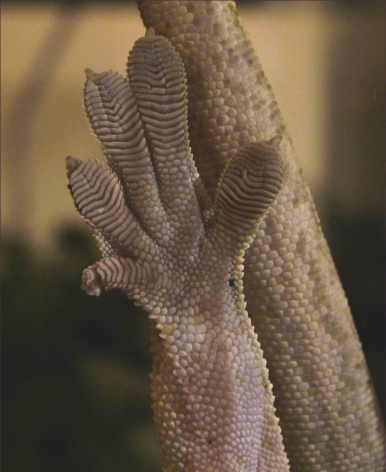 |
| Interestingly, crested geckos are relatively new to herpetoculture (having been rediscovered in 1994, after a period of presumed extinction). Accordingly their normal life span can only be guessed; many estimate it to be between 10 and 20 years. Since their rediscovery, crested geckos have become increasingly popular as pets, and rightly so; they are extremely cute, full of character, easy to handle, and do not require complicated care regimes or conditions. And as if that wasn't enough, they are available in a variety of morphs. | 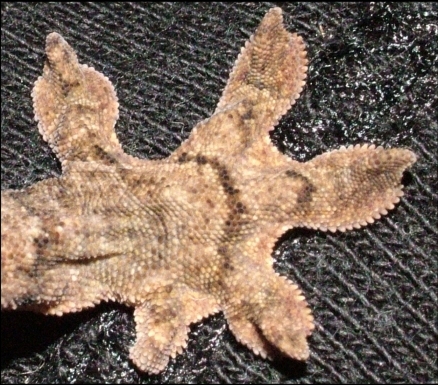 |
Color Morphs
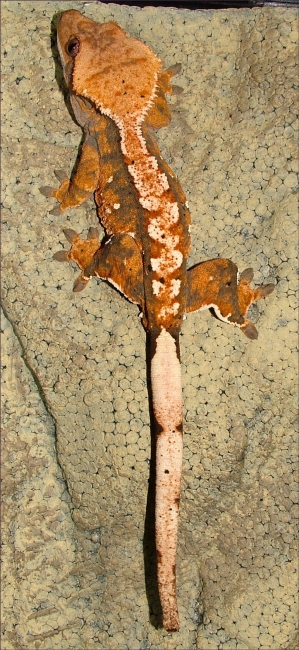 |
Their ability to produce a wide variety of colours and patterns (polymorphism) has resulted in numerous morphs of crested gecko becoming available to keepers within a very short time. Already, selective breeding is playing a role in increasing the range and intensity of colours and patterns available. A crested gecko's morph may consist of just one base colour, or may be a combination of different colours making one of several patterns. An excellent source of further information and some stunning photos of the various morphs can be found in de Vosjoli et al. In addition, crested geckos change colour during the day; they tend to be quite dull when sleeping and brighten up, sometimes to a very different colour and pattern, in the evening. | ||||
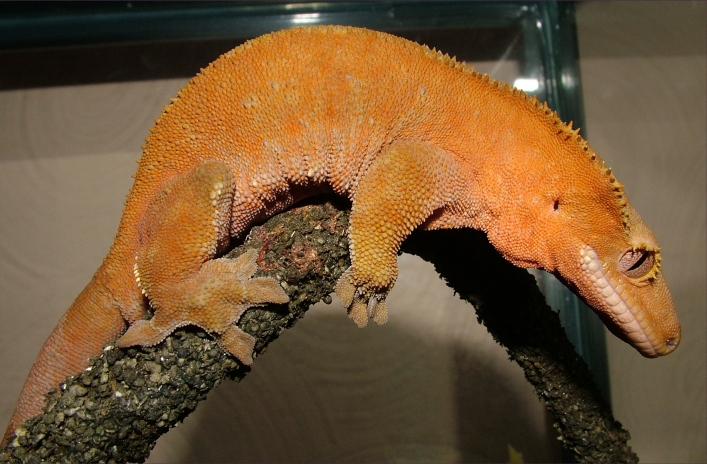 |
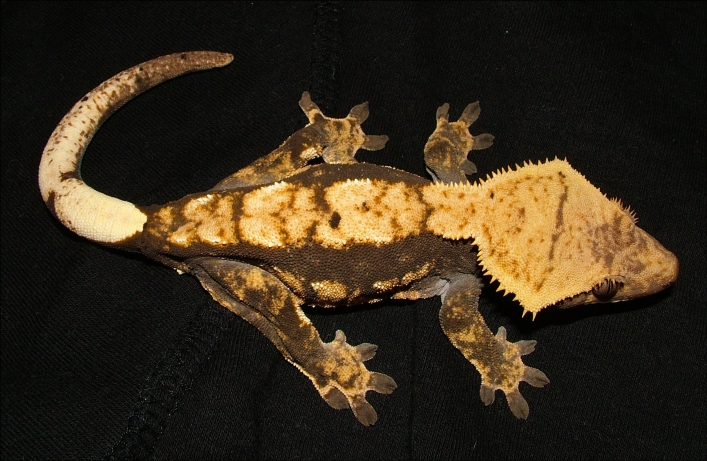 |
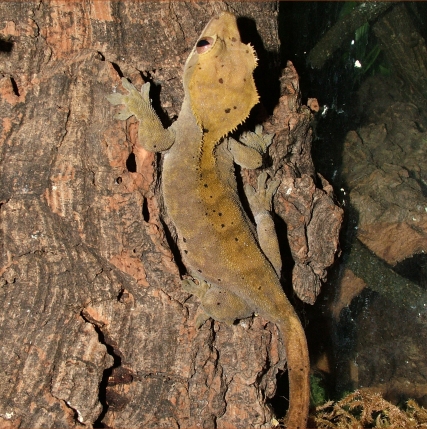 |
|||
For the Rhacodactylus enthusiasts among us, other geckos of this genus are also available to keepers. There are currently five other species and two subspecies recognized, R auriculatus, R chahoua, R leachianus leachianus, R leachianus henkeli, R sarasinorum, R trachyrhynchus trachyrhynchus and R trachyrhynchus trachcephalus. Most of these species are known by several common names. All Rhacodactylus species have similar care requirements, however, a prospective keeper should do sufficient research prior to obtaining any new species.
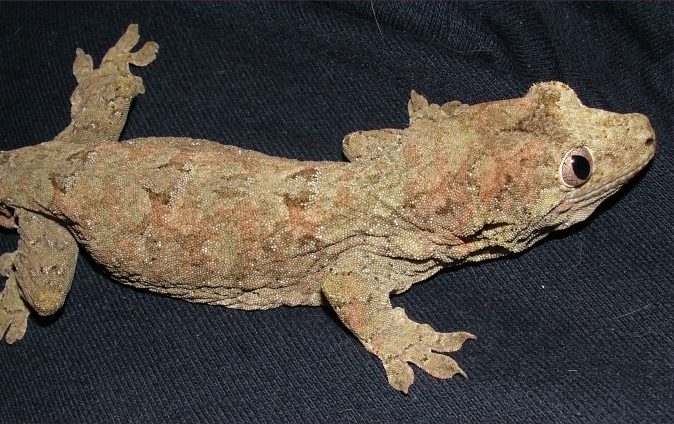 |
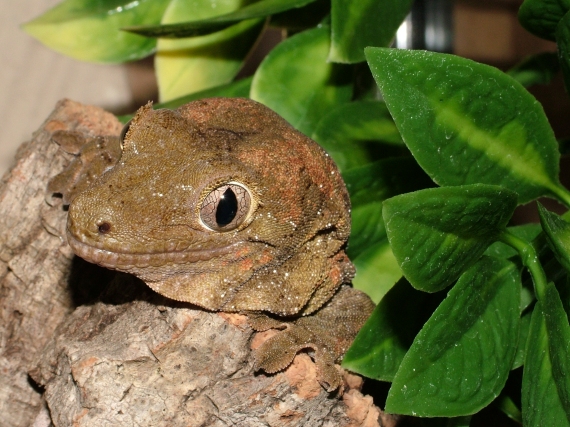 |
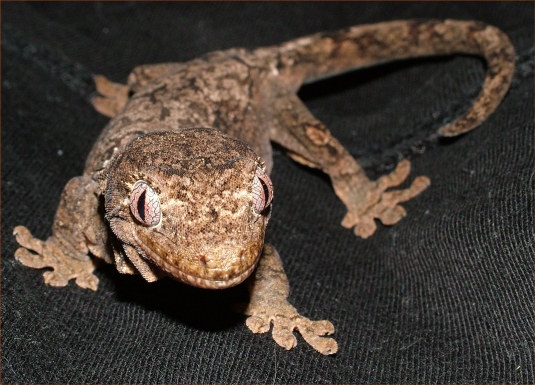 |
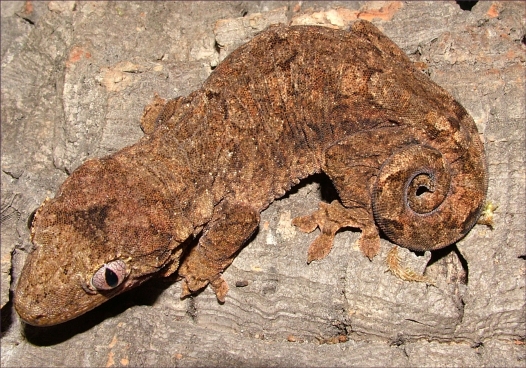 |
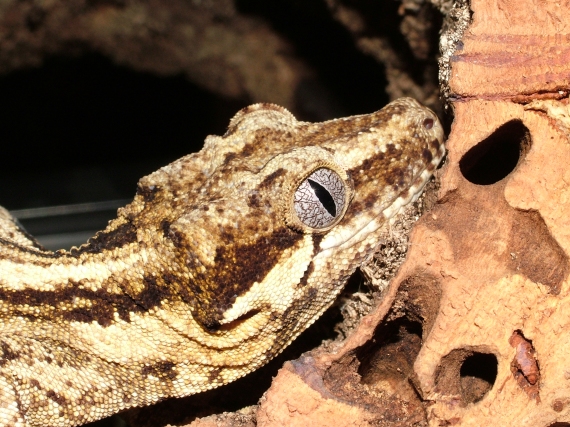 |
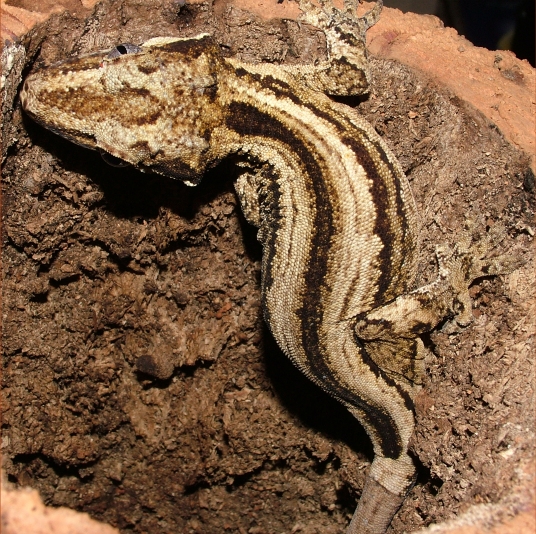 |
Care
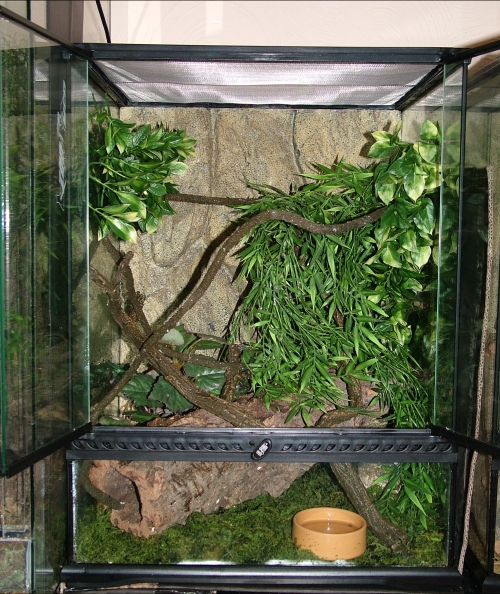
Vivaria can be either wooden, glass or the screen mesh type. The geckos need for humid conditions dictate that the vivarium should be well ventilated; inadequate ventilation can lead to health problems such as respiratory disease. Being an arboreal species, crested geckos require tall vivaria. A minimum sized tank for 1 crested gecko would be 2ft high by 1.5 ft wide by 1.5 ft deep, however they will make use of all of the space available so it is advisable to provide a bigger vivarium. They can be kept in groups (although only 1 male per vivarium), group housing should be bigger to provide adequate space for each individual.
The choice of substrate (as always for reptiles) is one that should be made carefully, it should be one that can hold a bit of humidity and be soft to avoid snout injury when the geckos are hunting. One thing to also keep in mind is that crested geckos are quite clumsy hunters and they can easily shovel up substrate in their mouths, so a particulate substrate may present a high impaction risk. Moss is an ideal substrate; as well as holding humidity, it is suitable for them to hide underneath. When using moss as a substrate it is important (before use) to remove any twigs that might accidentally be ingested.
The vivarium should be furnished with the aim of providing an environment in which the geckos can climb, jump, hide and feel secure. Adequate climbing material (as well as correct supplementation of the diet with calcium and vitamins) is necessary for the gecko's health. It has been proposed by de Vosjoli et al that factors such as inadequate climbing material, a large heavy tail and incorrect supplementation can all contribute to floppy tail syndrome, a condition where the tail of the gecko seems insufficiently supported at the base and therefore droops over the gecko's head when they hang upside down on a vertical surface. In association with this, the pelvic girdle may be deformed/twisted. The occurrence of floppy tail syndrome should be investigated to ensure that care and dietary supplementation are optimal.
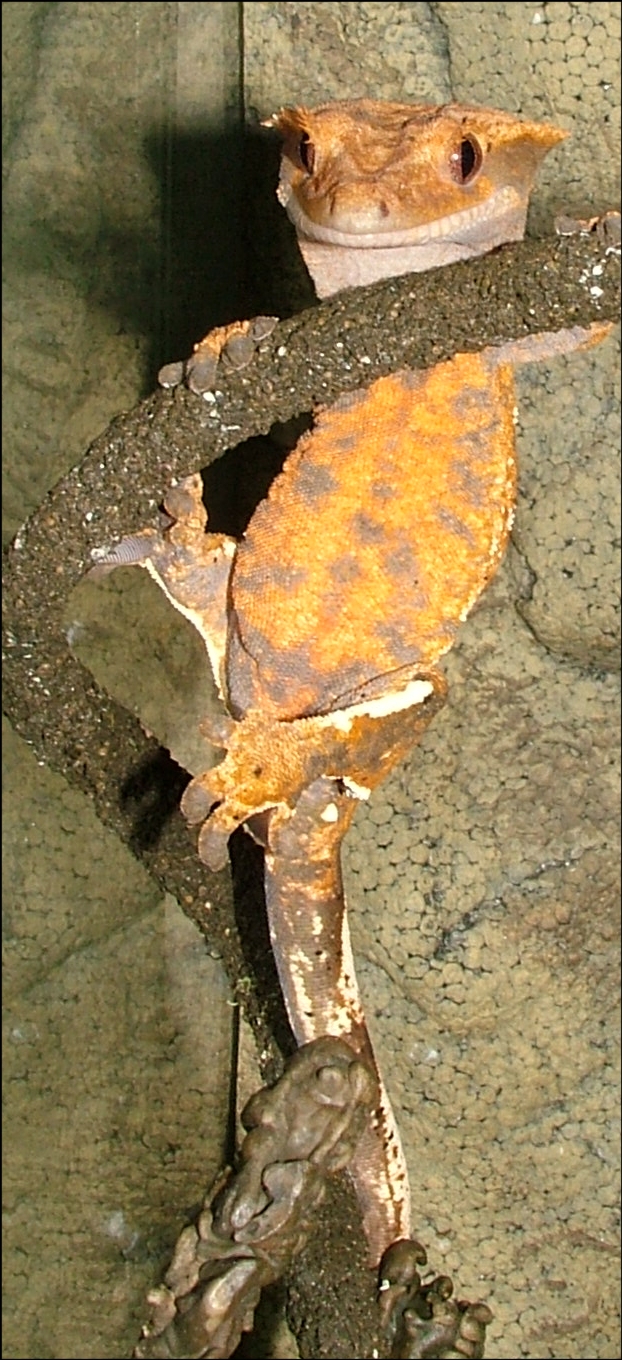
Items such as bendy vines, cork bark, drift wood and bamboo tubes make good climbing materials. Any tubes should be wide enough inside that the geckos cannot get trapped. The decor should be placed at a range of orientations and should be secured to avoid injuries due to collapse. Dense plastic or silk plants can be used to give a more natural look and provide cover. Live plants (such as ficus and pothos), washed and repotted to remove any pesticides, can also be used, these help maintain the humidity in the vivarium, however, they do require UV light and can be quickly damaged by the geckos jumping all over them.
The temperature in New Caledonia ranges from mid-high 60s F during the cool season to low 80s F during the warm season. Room temperature (without any additional heating) is, therefore, usually quite adequate. If additional heating is required, it is best provided by a guarded basking light regulated by an appropriate thermostat. Crested geckos are reported to be able to tolerate low temperatures into the 50s F during the night as long as they can warm up during the day, however, they are not so tolerant of higher temperatures and can become stressed in temperatures exceeding the low 80s F.
The best way to provide light is a guarded strip light placed across the top of the vivarium. This can be set using a timer to give a 14 hour day and 10 hour night for summer and the daylength can be gradually decreased in autumn to provide 10 hour days over the winter months. As with most nocturnal gecko species, UV lighting is not necessary providing supplementation of the diet with calcium and vitamins is optimal (see below). However, the jury is still out as to whether a low level of UV may be beneficial or not. Certainly, crested geckos do change colour, they tend to go darker, during exposure to UV light (casual personal observation) which, at least, indicates that they are sensitive to UV. One thing to consider is that many UV lights are designed with the requirements of day active species in mind so could be too strong; that in combination with the crested geckos lack of eyelids would mean that their eyes may be exposed to a lot of UV, there are concerns that this may cause sight problems and blindness. Some very good, dark, hiding spots are therefore essential, so that the geckos can completely get away from the UV light if you choose to use one. A good compromise would be to provide a very low level UV light for just 1 or 2 hours per day.
As already mentioned, crested geckos like relatively humid conditions (average relative humidity in New Caledonia is 70-80%). The walls and decor of the vivarium should be sprayed twice daily, although the amount of spraying may need to be adjusted depending on the type of vivarium used (e.g. a mesh type vivarium may require extra spraying to maintain the required humidity level). As well as increasing the humidity in the vivarium, spraying also provides drinking water. Crested geckos will happily drink the sprayed droplets, however a small shallow water bowl should be available too. An area of higher humidity such as an open-topped tupperware container half-filled with moistened moss or eco-earth will be used to aid in shedding or when the geckos are in need or a cooler retreat and it will also double as an egg laying box for breeding females.
Vivarium maintenance can be quite time consuming and labour intensive. The geckos will make use of every bit of space available to them and do not have a preferred toilet area, it is therefore necessary to thoroughly clean the vivarium and its entire contents on a regular basis.
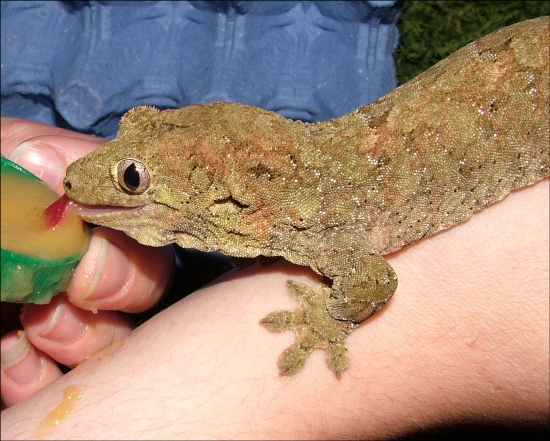
Crested geckos are omnivores; in the wild they eat a variety of fruits, nectars and insects. In captivity they will readily accept fruit and appropriately sized (around ¾ in size the width of the gecko's head) insects. Livefood can consist of crickets, locust, cutworms, silkworms and occasional waxworms. A crested gecko's jaw is not very powerful and they do not chew their food before swallowing, they tend to instead hold it in their jaw for a minute or two (presumably crushing it) before swallowing, therefore the more hard-bodied livefood (such as mealworms) may not be a suitable food. The sweet soft pulpy types of fruit such as peach, nectarine, mango, apricot, banana, passionfruit, pear etc are common favourites and can be offered as a puree, finely chopped or in the form of pure fruit babyfood. A good feeding regime would be to offer the geckos two servings, in a small shallow dish, of fruit per week (half to one teaspoon per animal) and two or three servings of livefood (4-6 items per gecko). Livefood should be gutloaded with an appropriate nutritious diet prior to use. To provide the necessary calcium and vitamins, the livefood should also be dusted with calcium once per week and dusted with calcium plus vitamins, including D3, once per week. More recently, a dry diet has been introduced to the market by Trex. The powder is a complete mix of everything required for a balanced diet, including calcium and vitamins. The powder should be mixed with water (or alternatively into babyfood) as directed and can be used as the sole diet, however, many keepers prefer to provide a more natural diet and, therefore, offer livefood too.
Like other gecko species, crested geckos shed and eat their skin. In most cases you will not see your gecko shedding, the entire process seems to occur very quickly. Should you observe your gecko having difficulty climbing and/or partially shed, with patches of unshed skin stuck to the body (usually around the feet and toes), it would be wise to increase the humidity in the vivarium by extra spraying as that may be a sign of inadequate humidity levels.
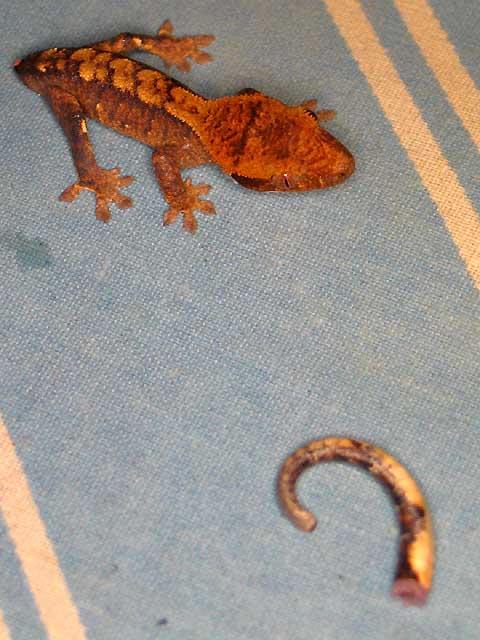 |
Crested geckos are normally tolerant of gentle handling, although you should bear in mind that they are capable of leaping long distances. They can be very active and energetic, so it is best to handle them near to ground level to prevent accidental falls. The recommended way to handle them is to place one hand higher and in front of the other, as the geckos moves to the hand in front bring your other hand in front again and continue to cycle your hands. Rough handling or stress can cause them to drop their tails, which do not grow back. Interestingly, tail-less crested geckos are much more common in the wild than those with tails (de Vosjoli et al) so tail loss should not put your gecko at any disadvantage. | 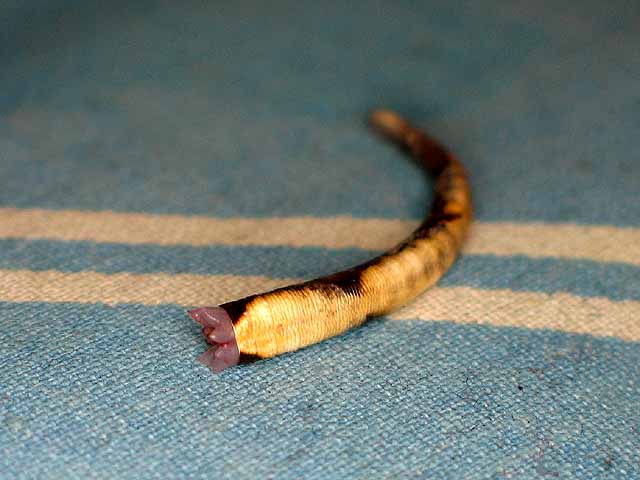 |
